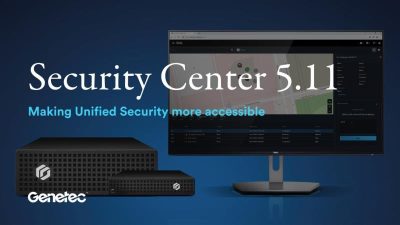
To ensure optimal performance for your needs, client workstations must meet or exceed the minimum, recommended, or high performance profile for Security Center 5.11.
IMPORTANT: The recommended system requirements for Security Center 5.11.0.0 refer to newer generation hardware. Upgrading from Security Center 5.10 with older hardware does not impact performance when using the same feature set.
The requirements for Security Center 5.11 client workstations are as follows:
| Client profile | Client characteristics |
|---|---|
| Minimum | Intel® Core™ 2 X6800 @ 2.93 GHz2 GB of RAM or better32-bit operating system80 GB hard drive for OS and Security Center applications, with a minimum of 6 GB of free disk space to install the Security Center client application256 MB PCI-Express x16 video card1280 x 1024 or higher screen resolution with 96 dpi100 Mbps Ethernet network interface card |
| Recommended | 9th Generation Intel® Core™ i7-9700 or better8 GB of RAM or better64-bit operating system120 GB Solid State Drive for OS and Security Center applications, with a minimum of 6 GB of free disk space to install the Security Center client applicationGbE network interface cardNVIDIA® GTX 1660 video card |
| High performanceVideo intensive configuration | 9th Generation Intel® Core™ i9-9940X or better16 GB of RAM or better64-bit operating system240 GB Solid State Drive for OS and Security Center applications, with a minimum of 6 GB of free disk space to install the Security Center client applicationGbE network interface cardDual NVIDIA® GeForce® RTX 2080 video card |
Maximum number of cameras viewed per client type in Security Center 5.11
To ensure optimal performance, do not exceed the maximum number of cameras that can be viewed on each client workstation type in Security Center 5.11.
The maximum number of camera streams supported by each client workstation profile is as follows:
| Decoding benchmarkH.264 / HEVC (H.265) | ||||
|---|---|---|---|---|
| Resolution @ 30fps | VGA640 x 480 | HD1280 x 720 | Full HD1920 x 1080 | Ultra HD3840 x 2160 |
| Average bit rate per cameraH.264/H.265 | 1 Mbps | 2.3 Mbps | 5.5 Mbps | 20 Mbps |
| Minimum | 6/0 | 2 / 0 | 1 / 0 | 0 / 0 |
| Recommended1 | 53 / 52 | 36 / 34 | 25 / 23 | 6 / 8 |
| High performance1 | 125 / 126 | 78 / 73 | 53 / 59 | 17 / 28 |
1 Maximum number of streams at full capacity (85% CPU and GPU utilization) in a static environment (video wall). Reducing the number of streams is required based on the use of additional features such as visual tracking or guard tours.
NOTE: In an active operator scenario, the maximum number of decodes should not exceed 95% of these numbers.
GPU considerations
- NVIDIA® card with CUDA compute capability 5.0 or higher is recommended.
- NVIDIA®-SLI™ bridge not supported.
- If your Intel® processors support Intel® Quick Sync Video, then this technology can also be used provided the monitor is plugged into the motherboard. Laptops can also use Quick Sync Video.
- Two or more graphic cards can be used to support different monitors individually. To have the video decoding done on the card, at least one monitor must be connected to each card.
- Activating hardware acceleration can generate a slight video decoding delay.
Encryption impact on workstation performance
Video encryption can increase the CPU usage by up to 40% when viewing low-resolution video (CIF). The impact becomes less noticeable as the resolution of the video increases, because much more processing power is spent on decoding the video than on decrypting the video. The impact on performance becomes unnoticeable when viewing HD and Ultra-HD video.
Watermark impact on workstation performance
Video watermarks are rendered by the client workstation. This extra load reduces the maximum number of live and playback video streams that can be displayed simultaneously. On average, the maximum number of tiles that can be displayed when hardware acceleration is enabled is reduced by 10%. This reduction reaches 30% on machines without hardware acceleration. The performance impact increases with the video resolution.

